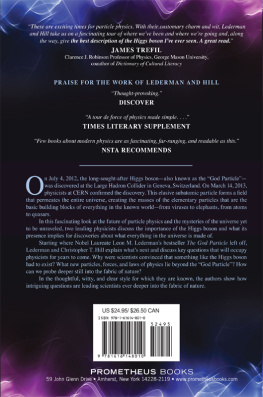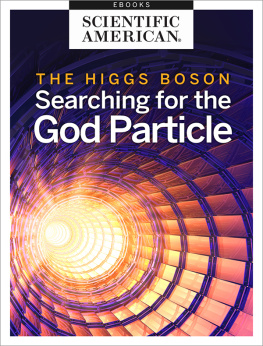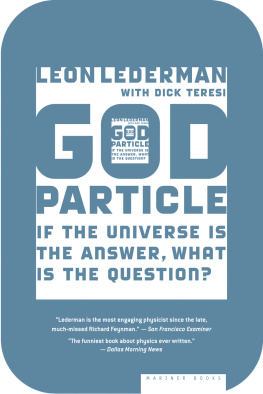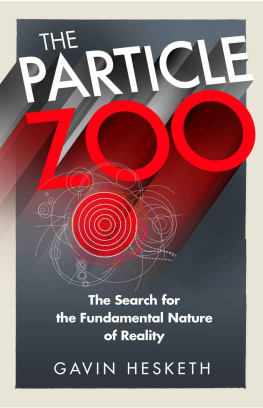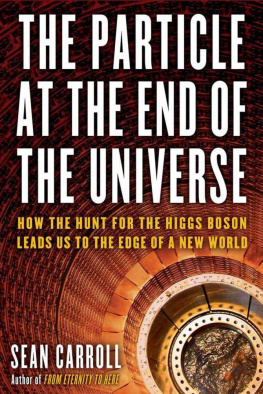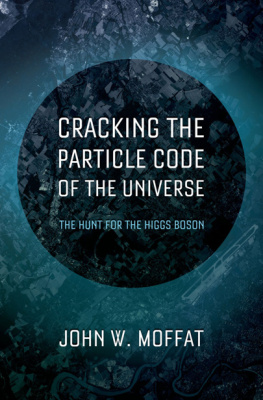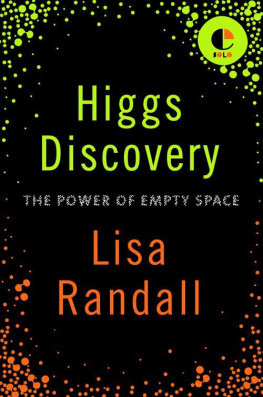
We thank our dear late editor, Linda Greenspan Regan, for her tireless efforts in initiating this project, and her excellent editorial skills throughout our previous projects, Symmetry and the Beautiful Universe and Quantum Physics for Poets. We also thank Julia DeGraf, Jill Maxick, Brian McMahon, Steven L. Mitchell, and Grace M. Conti-Zilsberger, who have served as our editors through the oft-time hectic completion of this book. For useful comments and advice, we thank Ronald Ford, William McDaniel, Ellen Lederman, and especially Maureen McMurrough and her dachshunds.
The authors also underscore the importance of the learning of science by young people. Here, the continuing efforts of Prometheus Books in the publication of science books are gratefully acknowledged, as are the huge contributions of schools throughout the country. We especially acknowledge the Illinois Mathematics and Science Academy, recognized as one of the most successful science high schools in the nation, and Fermilab, the greatest national laboratory in the Western Hemisphere and our favorite in the solar system.

THE STRONG INTERACTIONS
By the mid-1960s, a vast array of strongly interacting particles was produced in many experiments at the many new accelerator labs. The number of new particles surpassed the number of atomic elements. Almost all of these various new particles were cousins of the proton, the neutron, and the pionthe components of the atomic nucleus. These particles were unstable, some having comparatively long lifetimes of a hundredth of a millionth to a tenth of a millionth of a billionth of a second (10-8 to 10-16 seconds), while others had ridiculously short lifetimes, about 10-23 seconds, not much longer than the transit time of light across their diameters. As these new strongly interacting particles proliferated, only one tool could be brought to bear to try to make sense of themsymmetry.
TOO MANY FUNDAMENTAL PARTICLES
The first order of business in any science, such as zoology or botany or epidemiology, is to classify things. This means that you make lists of everything you have observed and then try to put these items into general related categories. For example, we might list animals according to whether or not they have backbones (vertebrates and invertebrates). Within this category we make a sub-list according to whether they have scales, feathers, fur, etc. Then we look for patterns among the lists. Eventually we discover relationships, and we can then formulate theories of their origins and try to explain the myriad patterns.
By the end of the 1950s there were three broad categories of elementary particles. First, there were a few nonstrongly interacting matter particles (particles that don't participate in the strong interactions, that is, they do not interact with Yukawa's pions or any of their relatives). These were initially seen to be comparatively lighter-in-mass particles compared to the proton and neutron, so they were dubbed the light ones, which in Greek is leptons. The class of leptons contained the electron, the muon, and two very hard-to-observe particles called the electron neutrino, ve, and the muon neutrino, v. Much later, in the mid 1970s, another pair joined and completed this class of leptons, called the tau, , and the tau neutrino, v. Even though the tau is heavier, it shares the nonstrongly interacting behavior of the electron and muon, and it fits into the lepton family.
By the 1970s accelerator experiments had confirmed that leptons were point-like, or structureless, objects down to the smallest accessible distance scales, about a hundredth of a millionth of a billionth of a centimeter (10-17 cm). In addition to the leptons there were two other particles that are strictly force carriers and that fall into a special class we call gauge bosons. These include the well-known photon, the particle of light, and a hypothetical gravitonthe particle of gravity.
The remaining particles comprising the vast list of strongly interacting particles were called the hadrons or strong ones. All strongly interacting particles were found to have a finite nonzero size of about a hundredth of a thousandth of a billionth of a centimeter (0.2 1013 cm). Various patterns began to emerge within that class of particles. Indeed, the patterns began to hint that hadrons are actually composed of smaller, more elementary objects deep down within another stratum that could not yet be resolved with the existing accelerator probes.
For a long time there was considerable resistance to the idea of any further substructure within the hadrons. No matter how high an energy probe struck the proton, it was not possible to smash it into smithereens. All that happened was that other short-lived hadrons were produced in these collisions, and you ended up back with the original proton (or a neutron or pions) you started with. Evidently Democritus's idea of fundamental underlying atoms was breaking down with the discovery and properties of the hadrons. Very novel and Zen ideas emergedperhaps hadrons are composed of each other in such a way that none is truly fundamental and yet all are? It was as if the world of hadrons were an Escher staircase, eternally going uphill, only to return again to the first step.
Connected to this idea was the notion that hadrons are not made of point-like objects but are more like the consistency of puttydeformable and malleable rather than point-like and hard. One of the most intriguing patterns among these objects could be explained if it was assumed that, as the putty rotates rapidly, it becomes drawn out into a kind of putty string. Various quantum modes of motion of this string were studied, and it seemed to make senseall of the hadrons could be explained as putty strings, and many of their properties were predicted and emergent from the idea. Thus was born, in attempting to explain hadrons, a new type of dynamical quantum theory, the string theory.
THE STRATUM OF QUARKS AND LEPTONS
But the long list of too many strongly interacting particles led some physicists, most notably Murray Gell-Mann and George Zweig of the California Institute of Technology, to assert that these were not fundamental. The long list of hadrons had certain patterns, like the recurring chemical properties of atoms, and hinted at the existence of yet another layer of the physics onion. Yet there was a serious problem with the idea of another stratum of naturewhatever comprised the strongly interacting particles could never be set free from the particles they composed by any experiment. Even the most powerful of particle accelerators, producing the most violent collisions, never liberated any of the hadronic innards, and instead simply produced more and more of the unstable hadrons.
Nonetheless, for a particular theoretical next layer of constituency of matter, whether real or purely mathematical, Gell-Mann introduced the term quark. the first photograph of the inner world of the proton was taken at the Stanford Linear Accelerator by scattering very energetic electrons off of protons, a process known as deep inelastic scattering. For the first time, the constituents of hadronsthe quarkswere seen. It was also observed that half of the constituents of the hadrons were something elsea mysterious electrically neutral component of these particles was detected. Could this be the glue that holds the quarks inside?
Initially, almost comically, the theoretical force carriers that bind quarks within hadrons were dubbed gluons. Soon, however, by making a profound analogy with electric and magnetic forces generated by photons,
Next page
